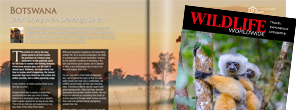Located north of Mount Hagen, from its mist-shrouded peaks and alpine grasslands to its lowland rainforests, the Western Highlands is a land of colour and vibrancy.
Home to the the world’s largest population of birds of paradise, the rainforest habitat is home to an abundance of wildlife of all sorts. It is traversed by a number of well-maintained trails, making it one of the most pleasant locations for hiking in the highlands.
You may encounter several highland species: Brehm’s tiger-parrots, crested berrypecker, and crested satinbird are all seen in the garden, while brown sicklebill and ribbon-tailed astrapia are sometimes spotted. Blue, King-of-Saxony, and lesser birds of paradise require more dedication but are also possible, as many highland birds that include tit berrypecker, wattled ploughbill, blue-capped ifrita, garnet robin, and black-breasted boatbill.
The local economy is based on coffee, which is grown both on large plantations and on small-holdings, where it is picked, dried and processed for export. Tea is another major crop grown in large plantations and processed for local consumption and export. The combination of fertile soil, high rainfall and cooler temperatures is also ideal for the cultivation of vegetables for the domestic market.
Mount Hagen’s Saturday market is the focal point of local life and a meeting place for traders from all over the province – a kaleidoscope of fruit and vegetables, birds, animals and people in bright clothing, some wearing flowers or grass in their hair. Traditionally, men wear a long beard, while women wear brightly-coloured scarves and carry hand-made string bags, called bilums, which are used to carry everything from babies to firewood, and can be bought here. Traditionally the string is made from tree bark, though nowadays days many women use synthetic yarn bought from local stores.
The province covers a surface area of 4,300 square kilometres and, despite having a population of only just over one quarter of a million inhabitants, is the most densely populated province in the country.
View suggested itineraries












